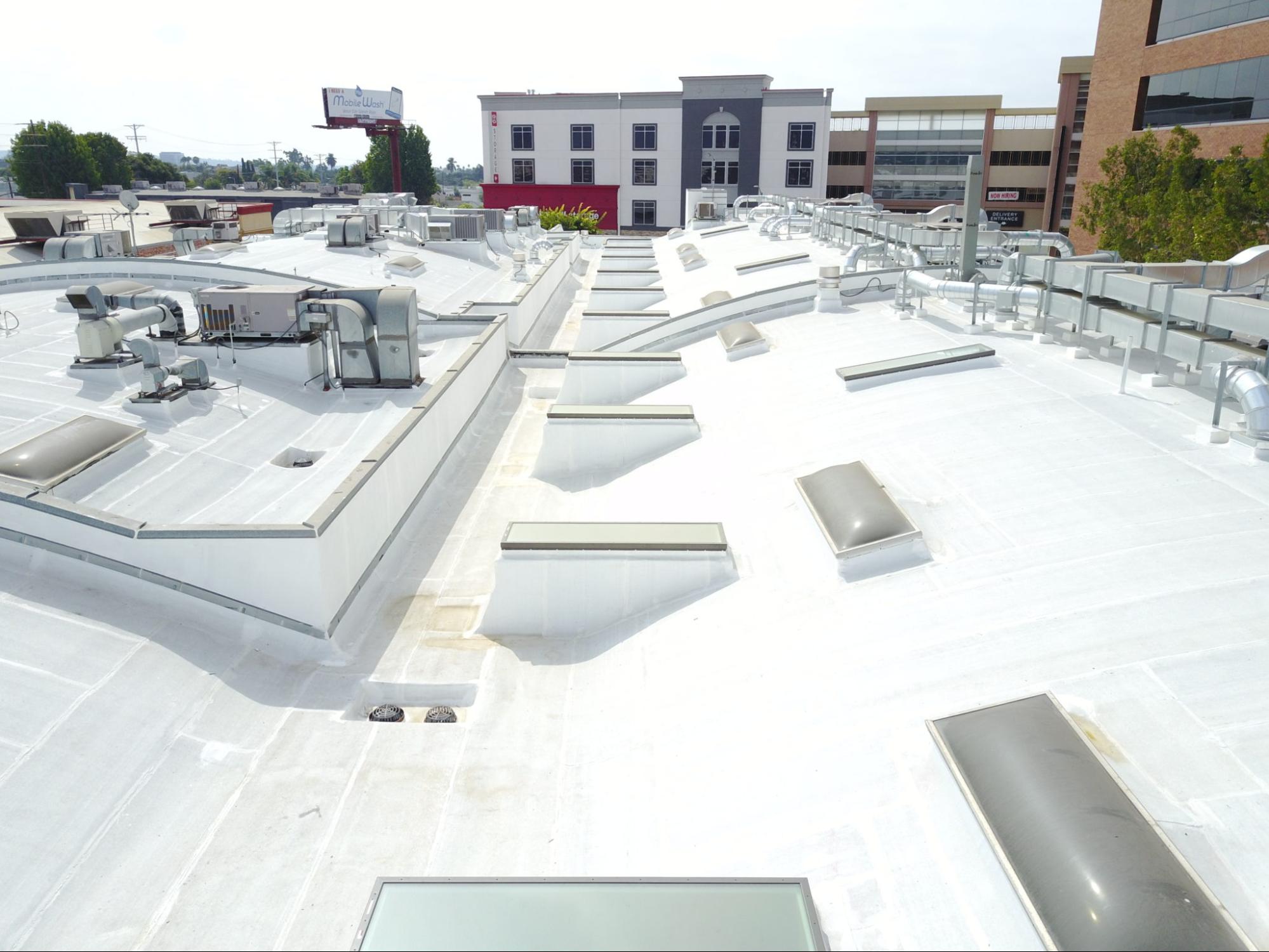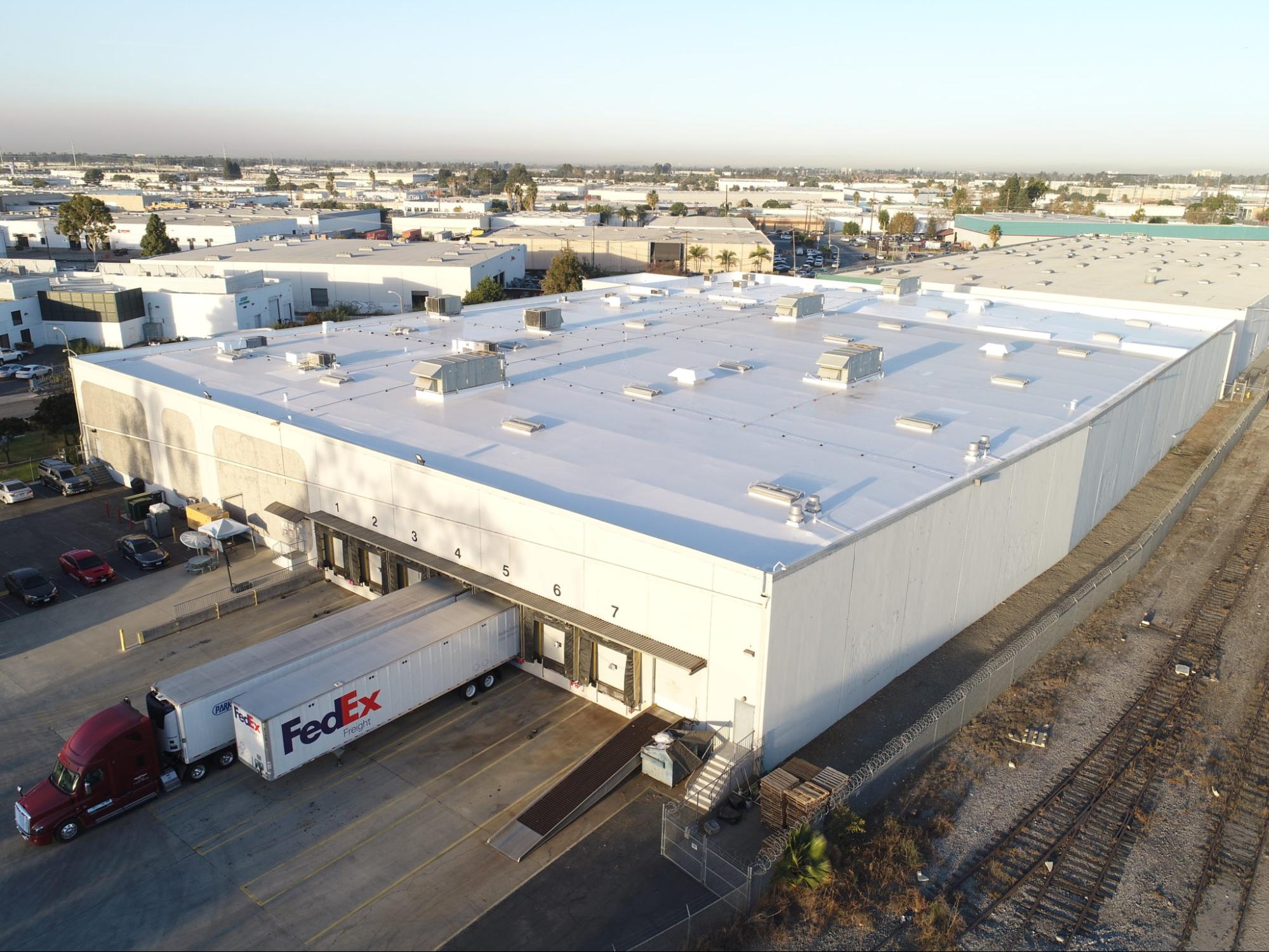
Roof designs are classified into two main categories: low-slope and steep-slope roofs. We’ll examine the key differences between these two types, discuss their benefits, and identify the best roofing products for each category.
Before we begin, it’s crucial to understand how roof slope is measured to determine whether you’re dealing with a low-slope or steep-slope roof. Nearly every roofing system has some degree of slope; even “flat roofs” have a slight incline.
In professional roofing, the slope (or pitch) is measured by how much the roof rises vertically for every 12 inches of horizontal length. This measurement is expressed as a ratio of the rise to 12. For instance, if the roof’s elevation increases by 2 inches for every foot of horizontal length, the slope is represented as 2/12. Similarly, if the roof rises by 4.25 inches for every foot, the slope is 4.25/12. This method allows for a precise understanding of the roof’s angle, which is critical for determining the appropriate materials and design considerations for both low-slope and steep-slope roofs.
Low-Slope Roofs

What qualifies a roof as “low-slope”? The answer varies depending on the source. The Occupational Safety and Health Administration (OSHA) officially defines a “low-slope” roof as one with a slope of less than 4/12. However, some roofing companies consider a roof low-slope if it has a slope of 3/12 or less, while others set the threshold at 2/12 or less. For our purposes, we’ll use the OSHA definition.
Benefits and Considerations of Low-Slope Roofs
Low-slope roofs provide several advantages, particularly for commercial buildings. One key benefit is that they can serve as an additional “floor,” accommodating large equipment such as HVAC units and allowing for foot traffic. Additionally, low-slope roofing are generally more cost-effective to install because they require fewer materials and pose less risk to workers. However, these roofs need excellent waterproofing and must be kept clear of debris to prevent water pooling and leaks.
Common Types of Low-Slope Roofs
- Built-Up Roofs (BUR): These roofs consist of multiple alternating layers of asphalt and reinforcing fabric, typically topped with a layer of gravel.
- Flat Roofs: Often used in commercial settings due to their straightforward installation and lower material requirements. They must be designed with proper slope to prevent water accumulation and potential damage.
- Modified Bitumen: This roofing material is a membrane made of asphalt combined with rubber or plastic polymers, usually installed in two layers (base sheet and cap sheet). Modified bitumen roofs offer enhanced flexibility and can withstand extreme temperature fluctuations, making them a versatile and high-performance choice.
- Single-Ply Roofing Membranes: These membranes are either rubber-based (EPDM) or thermoplastic (TPO, PVC).
Steep-Slope Roofs
Let’s now turn our attention to steep-slope roofs.
According to OSHA’s definition, a steep-slope roof is any roof with a slope greater than 4/12. While steep-slope roofing is primarily used for residential buildings, it can also be found on some commercial structures.
Benefits and Considerations of Steep-Slope Roofs
Steep-slope roofs are not only visually appealing but also require relatively low maintenance, as rain, snow, and debris drain off easily. The attic space under these roofs can act as an insulating buffer, helping to regulate the building’s temperature and making it easier to heat and cool. However, steep-slope roofs can create more unusable space in commercial buildings, come with higher installation costs, and present greater safety risks during maintenance due to their angle.
Common Types of Steep-Slope Roofs
Asphalt shingles are the most widely used material for steep-slope roofs. Metal roofing, including options like aluminum and copper, is also popular. Additionally, clay tiles and wood shakes are commonly used, though they tend to be more expensive.
Using Polyglass Products for Low-Slope and Steep-Slope Roofs
Polyglass is committed to helping professional roofing companies make the best use of our roofing materials — whether you’re working with a low-slope roof or a steep-slope roof. Don’t miss our video installation guides for low-slope roofs and steep-slope roofs.
Low-Slope Roofs
Polyglass offers a full range of reliable self-adhered modified bitumen products for low-slope roofs, along with high-quality underlayments, elastomeric coatings, and more. Properly fastening sheets to the roof deck is crucial in roofing installation to ensure stability and durability.
Standing seam metal roofing is another excellent option for low-slope roofs, known for its durability, performance, and aesthetic appeal.
Steep-Slope Roofs
Polyglass offers numerous high-quality underlayment products to provide excellent waterproofing for steep-slope roofs. Watch the video below for more details.
For more helpful roofing articles and resources, please sign up for our newsletter below.